- Who is it for?
- Pros and cons
- How to choose a color?
- Types of highlighting
- Rare
- Frequent
- Wide
- Technics
- Highlighting on a haircut cascade depending on the type of hair
- Highlighting on a cascade depending on the length of the hair
- Highlighting on a cascading hairstyle depending on the hair color
- Variations of bangs in the hairstyle
- Step-by-step instructions on how to do it at home
- Medium and long cascade
- Short cascade
- Highlighting on a haircut "cascade" for curly hair
- What is required for the procedure?
- The choice of brighteners and paints
- How to prepare your hair?
- How to properly separate the strands?
- Styling haircut cascade
- How to tint curls after staining?
- Who will not suit?
- Hair care after the procedure
- Conclusion
A cascade haircut 💇🏻♀️ and highlights combine to create a wonderful ✨ and fresh image 💦 that will suit every girl regardless of her hair color 👩🏻 and their structure.
Who is it for?
Despite the fact that the highlighted stylish cascade is not forbidden to absolutely anyone, there are categories of girls on which it will look especially advantageous. This hairstyle paired with selective strand dyeing is a real salvation for ladies with thin and sparse curls.
Torn edges, slight negligence, highlighting individual zones with color - all this will help to add volume to the hairstyle, make it textured and bright.





The ideal owner of a cascade with highlights:
- has a round or oblong oval of the face, slightly protruding cheekbones;
- suffers from "naughty" hair;
- does not like to spend a lot of time styling hair;
- loves varied and stylish hairstyles.


Pros and cons
Highlighting is the most advantageous option for dyeing hair cut under a cascade, and that's why:
- Highlighted strands accentuate the multi-level haircut.
- Color accents add volume to liquid hair.
- Brings novelty to the image.
- Advantageously emphasizes the curly structure of the hair.
But this staining technique also has minuses, which can ruin all the gloss of a new haircut:
- Highlighted strands on dark hair quickly fade and acquire a yellowish tint.
- If the hair is coarse, prone to dryness and sectioning, then highlighting will only ruin their appearance.
- The cascade focuses on individual curls and the ineptly performed highlighting will immediately be visible.
- As for the length - the cascade haircut is performed on long and medium hair. The texture of the curls can also be different - from straight to curly.
Reference! The most advantageous combination of highlighting and cascade looks on curly and thick hair.



How to choose a color?
The shade of the streaked strand should be in harmony with the native hair color. It is best to choose shades in accordance with the color type, eye and skin color.
- Color type girls "Winter" and "Summer" - with fair skin, blue or brown eyes, colorists recommend paying attention to cold shades. Cognac and chocolate (brunettes). Ash, silvery (for blondes).
- Color type girls "Autumn" and "Spring" - with olive or peach skin, brown or green eyes, it is better to pay attention to warm shades. Copper, amber, red (for redheads). Creamy, honey, wheat (for blondes). Cocoa and caramel color (for brown-haired women).


Types of highlighting
Rare
On a cascading haircut, it is suitable for those who like to stand out from the crowd and constantly change, bringing a touch of extravagance to their image. For example, you can lighten how much the strand framing the face in order to visually correct skin imperfections or emphasize the color of the eyes.Or apply the Veil technique, which is very advantageously combined with a stepped haircut, as the strands on the top of the head stand out.
The pluses of rare highlighting include:
- Practically does not spoil hair.
- Allows you to correct imperfections in the face and refresh its color.
- The strands can be dyed in both vibrant and natural colors.
Frequent
On a cascading haircut, this is a great way to add visual volume to hair in two ways at once - through the shape of the haircut and the play of color. The thinner the strands, the more natural the result is, which is in many ways similar to natural fading in the sun.
The advantages of frequent highlighting are as follows:
- Radically changes the image without causing too much damage to the hair.
- It looks natural.
- Doesn't need frequent correction.
- Hides the first signs of gray hair.
Wide
Wide highlights are another way to accentuate a graduated cut and hair texture. Can be performed partially or zoned. For example, only the strands near the face, on the crown or on the lower part of the back of the head are affected. It is much easier to perform than fine highlights and takes less time.
The advantages of this extravagant coloring include:
- Visually rejuvenates.
- Hides gray hair.
- Doesn't require frequent correction.
- Focuses on the structure of the curls.



Technics
There are 3 most common ways to highlight hair - through a hat, using foil or a comb. What is the best technique for cascading haircuts? Let's figure it out!
- Through a hat. This technique is suitable if the hair length is no more than 25 cm. The essence of this technique is that the master puts on a special hat with holes on the client and pulls the hair through the holes for subsequent dyeing. This method is convenient for frequent and rare highlighting, since thanks to the holes it is easy to measure the distance between the strands.
- With foil. The method is suitable for hair of any length and texture, however, it requires more time and skill than a cap. It is used for all types of highlighting. Its essence lies in the fact that the strand to be dyed is superimposed on the foil, smeared with a dye composition and wrapped in an "envelope".
- Comb "fence" - This tool is easy to use, therefore it is often used for home highlighting. The comb must be inserted into the hair, lift the captured strands, and then apply a clarifier on them.
Attention! The bangs are not stained only if you have chosen the highlighting technique, which implies an emphasis on the ends - shatush, balayazh or ombre. In other cases, the bangs are dyed along with the total mass of the hair.

Highlighting on a haircut cascade depending on the type of hair
Coloring curls, decorated in the form of a cascade, will allow you to create a delicate and sophisticated image when using natural tones or a bright, contrasting look when highlighting strands with clear wide areas.
The highlighting method is selected depending on the type of hair:
- for curly ones. You can add brightness and shining color overflows to curly curls using a gradient ombre or delicate Californian coloring. In the first case, the result will be quite rich and colorful, and in the second - the most natural and soft;
- for straight lines. Straight curls often lack volume, so partial or classic lightening in this case will be the best option, which will refresh the hairstyle and visually make the hair thicker and more luxuriant.
The cascade is beautiful not only for its ability to transform the image and add volume and grooming to the curls. Such a haircut will also allow you to effectively get rid of split ends without cutting off large split sections and without severely shortening the hair.



Highlighting on a cascade depending on the length of the hair
The type of staining, as well as determining the width of the selected strands, is often determined by the length of the curls.Slightly shortened versions and models of medium length, to the level of the shoulder blades or slightly below, remain the most popular and relevant.
Highlights for different lengths:
- on short hair. Dyeing a short head of hair will add splendor to the curls and make the image more expressive and dynamic. This is especially true on hairstyles with bangs and asymmetry, which can be favorably emphasized with the help of skillful lightening;

at medium length. Medium length will acquire additional volume, charm and sophistication. This length allows you to highlight the strands both in the classic way and in the fashionable gradient ombre method.

Short hair is usually distinguished by rare, thin or partial coloring, as well as by balayage, while medium-length hair involves the use of all other methods, including multitonal and ombre.
Highlighting on a cascading hairstyle depending on the hair color
The natural shade of the hair makes it possible to choose the most suitable color tones, which harmoniously emphasize the beauty of the basic natural color of the hair and create the necessary contrast that adds brightness to the image.
Highlighting for curls of different colors:
on blonde hair. You can add shine and brightness to light curls using a subtle or frequent dyeing method, as well as using balayage on short light strands. Shades can be varied - from light wheat to honey;

brown-haired women. It is more optimal for brown-haired women to choose light walnut and golden tones, applied using the classic or wide method;

brunettes. The saturation of dark hair will help to emphasize multitonal coloring, as well as shatush in coffee, chocolate and nut shades;

light brown. Light brown hair will become brighter and more expressive thanks to the rare and classic method of coloring in beige and caramel tones;

blondes. For blondes, both a light wheat range and an ash one with a silvery tint are suitable. The strands themselves are often dyed with a wide or classic highlighting method;

redhead. The owner of red hair will go copper and honey shades, and the method of application can be both frequent and rare.

When choosing a shade of paint and a coloring method, it is also important to take into account the general color type of appearance, starting primarily from the natural hair color and skin tone. So, for the winter and summer type, the best option would be a palette of cold shades, and for spring and autumn, warm colors.
Variations of bangs in the hairstyle
The cascade itself implies the presence of bangs. It helps not only to focus on the hairstyle, but also to hide minor imperfections in the shape of the face.
Types of bangs for the cascade:
- straight;
- oblique;
- short;
- long;
- torn;
- asymmetric.
The question of whether to dye bangs during highlighting or not does not cease to lose its relevance. Basically, the masters leave it intact, but if the cascade is short or there is asymmetry in the haircut, you can make several bright strands on it.
A few subtle strokes from the side of the cheeks will work well on thick, long bangs, this will help to add volume to the hairstyle.
A cascade without a bang is a common haircut option in our time. The absence of strands on the forehead is important when cutting on long hair. This option is suitable for girls with ideal facial features - curls cut by a ladder will emphasize the correctness and proportionality of the oval.


Step-by-step instructions on how to do it at home
The task of highlighting on a cascading haircut is to arrange the color transitions so that the painted lines repeat the shape of the hairstyle and emphasize its layering.
The choice of the lightening method depends on the type of cascade - long, medium, short. Moreover, techniques that are acceptable for long and medium hair will not work at all for short ones.
Medium and long cascade
The most natural color transition is required. Moreover, there may be several of them. The ideal option here would be ombre.This technique will emphasize the relief of the haircut, make it a little careless, and the image - at ease. I usually recommend dyeing the ends of the hair first, and then stretching the shade along the length.
I recommend painting using the ombre technique on the cascade at home according to the following scheme:
- Prepare supplies. You will need 2 combs (one with a thin handle to highlight strands), a bleach or paint, a bowl for mixing it, a brush for applying paint, gloves (put on your hands), a cape on your shoulders.
- Mix paint according to instructions.
- Color the ends of the hair. At this stage, only the lower third of the length needs to be worked out. If it is significant, you can tie the hair in two ponytails at the level of the chin, so it is easier to get to the ends.
- Withstand the paint for half an hour.
- Wash off the dye.
- Re-prepare the dyeing compound and apply it to 2/3 of the hair length (no ponytails).
- After 15 minutes, rinse your head with warm water and shampoo.
- Dry, apply a leave-in balm or mask.

Short cascade
The most profitable highlighting option is to dye only the top layer of the hair. The hair then looks like "highlighted" from the inside.
Also curls of short length require:
- the presence of sharp color transitions - with dark roots, make the tips light and vice versa;
- highlighting individual strands;
- accentuating the lines of the hairstyle;
- a large number of intermediate tones.
The classic highlighting scheme is more acceptable here. In addition to the accessories listed above, you will need a set of foil and clamps to fix the strands.
- Comb the hair thoroughly, divide into an even vertical parting.
- Select the zones - the occipital, temporal, area near the face. In each of them, dial an equal number of strands up to 1 cm wide, secure them with clamps.
- Mix the dye ingredients.
- Fasten a strip of foil under the strand on the back of the head.
- Quickly paint over a lock, gently comb and wrap in foil, folding it into an envelope.
- By analogy, process the strands in each of the selected zones.
- After 30-40 minutes, unfold the foil, wash off the paint.
- Smear dried hair with balm.

Start lightening the strands in a short cascade at a distance of 2-3 cm from the roots.
Highlighting on a haircut "cascade" for curly hair
The technique of such highlighting is called “herringbone” because of the parting pattern. We collect strands using the "veil" method well-known to the masters. That is, a very thin strand of hair is separated, which shines through on the palm (2-3 mm thick) and the step between the strands is literally 0.3-0.5 cm.
Divide the hair in half. We start with the parietal zone, using diagonal partings directed downward or upward. On the occipital zone, the set of strands is continued, moving from the crown down to the edge line, maintaining the chosen direction of the parting.

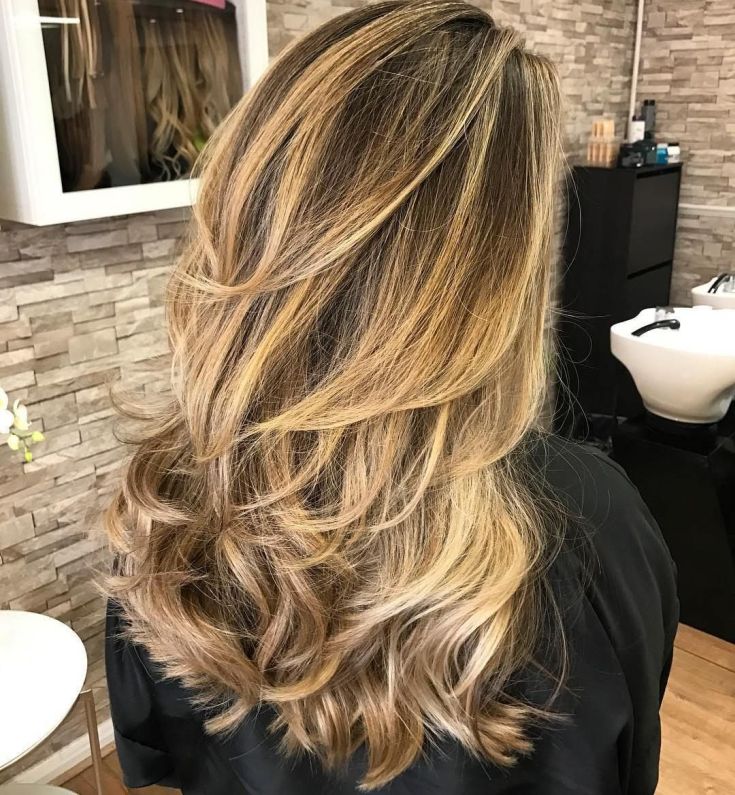
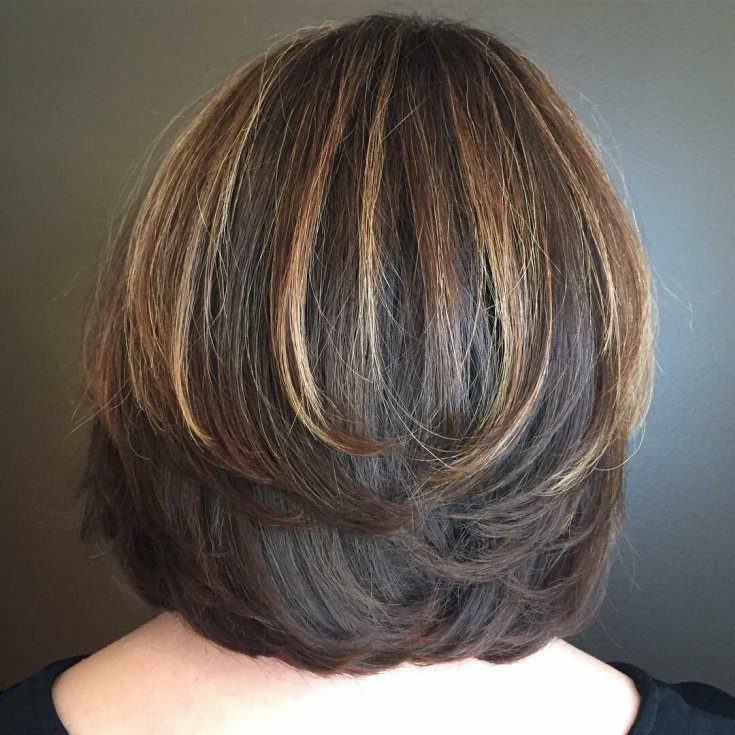
By the way, with such highlighting, it is not necessary to tint the roots every month - each strand will cover the overgrown roots of the previous one.
What is required for the procedure?
- Tools and supplies
- Foil for confectionery purposes. We cut it into strips with a length equal to twice the length of the strand. The width of the strip should be equal to ten to twelve centimeters.
- Hairpins for securing detached strands.
- Shoulder cape.?
- Plastic dishes for diluting the clarifier.
- Coloring brush.
- ?Disposable gloves.
- ? Plastic hairbrush with a long and thin handle. It is more convenient to use special comb for highlighting.
- Shampoo specially designed for highlighted hair.
- Care product - mask or balm.
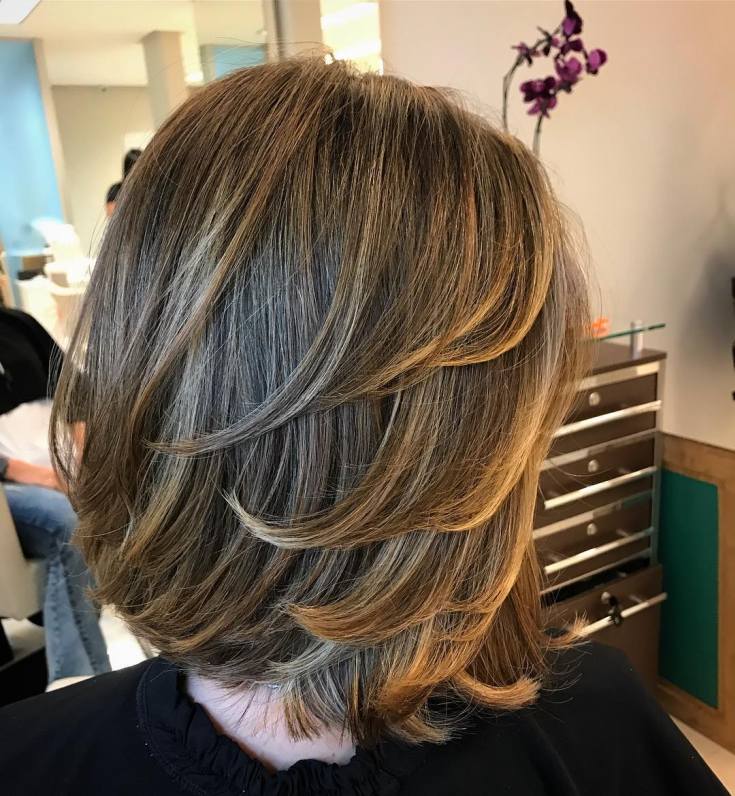
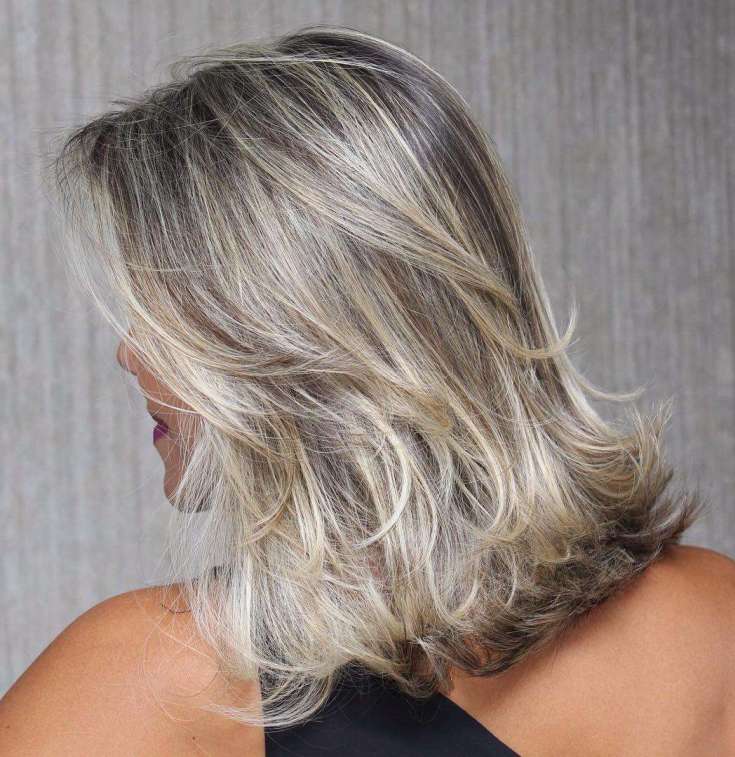
The choice of brighteners and paints
Rule number one - the brightening compound or paint must be of high quality. When self-coloring, it is better to use professional paint and not to use powder and oxidizer, since it is not easy to calculate the correct ingredients. The creamy brightener can be successfully used at home: the light texture does not run off and is easy to apply.
Attention! The result of highlighting will depend on the original color of the curls and the exposure time. The lighter and thinner the hair, the faster the lightening process goes .. By choosing any high-quality paint and correctly calculating the time of its exposure, you can get the result you expect
The attached instructions indicate the exposure time depending on your original color.
By choosing any high-quality paint and correctly calculating the time of its exposure, you can get the result you expect. The attached instructions indicate the exposure time depending on your original color.
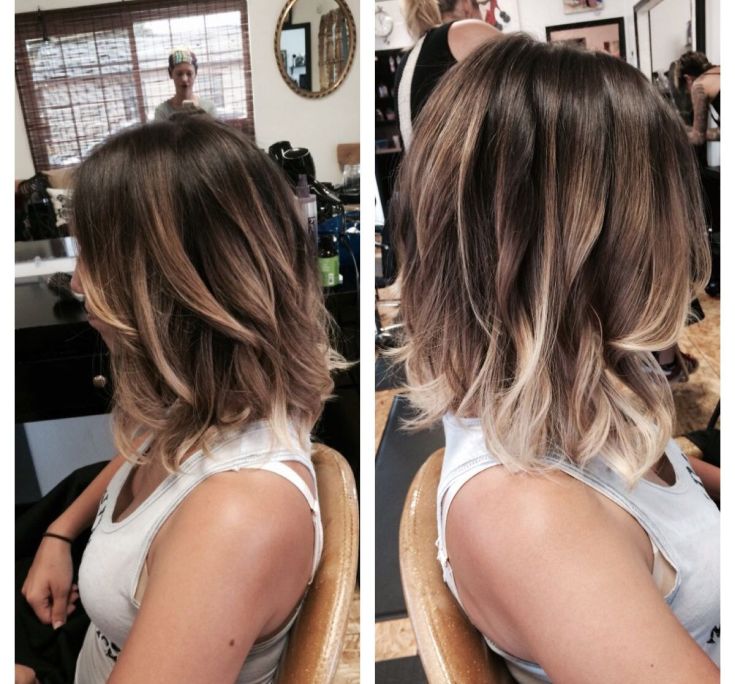
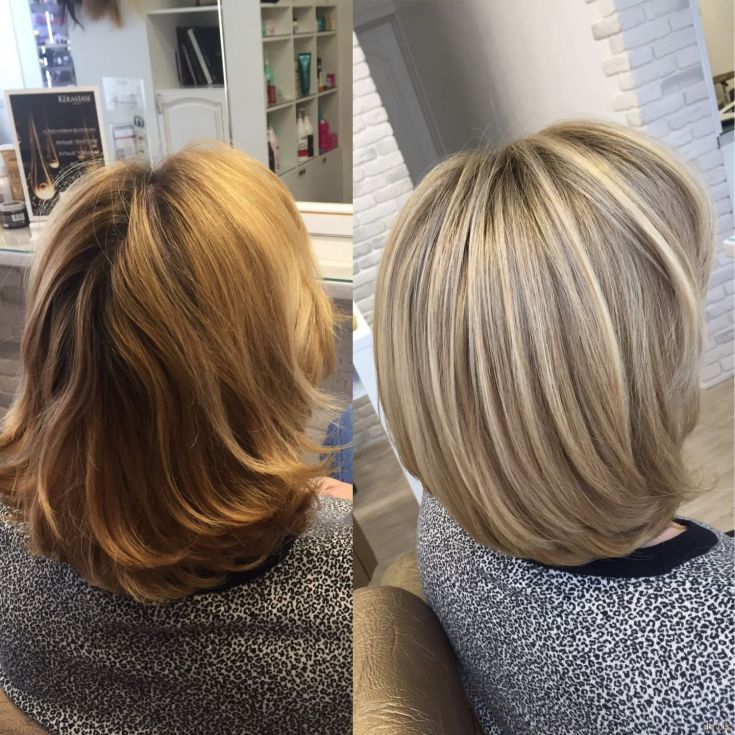
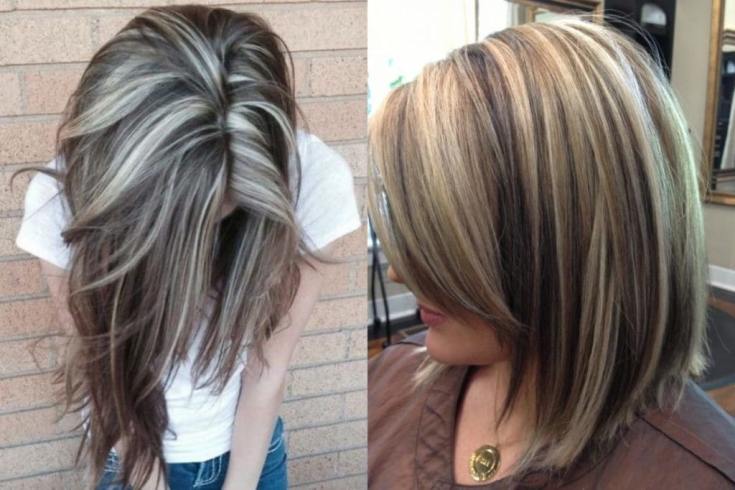
How to prepare your hair?
Before this procedure, you must not wash your hair for three to four days. If your hair and scalp are dry, then refrain from washing your hair for five days.
Experts recommend several weeks before the procedure to strengthen and nourish the curls with the help of various special means - masks, oils, balms. You can also strengthen your hair well with kefir masks, smearing your head with kefir and wrapping it in a towel for forty minutes.
How to properly separate the strands?
The strand separation technique is performed by craftsmen in different variations. But at the heart of each of them is always the division of the parietal part into a parting, which is located exactly in the middle. Then we select the strands diagonally at an angle of forty-five degrees relative to the parting.
We move from the forehead line to the crown of the head. Then we process the temporal and occipital parts. To perform the procedure at home, the division into zones must be carried out, guided by the criterion of convenience, but at the same time follow the diagonal principle. As a result, we will have a silhouette of the "Christmas tree".


Styling haircut cascade
A well-done haircut does not require special hairdressing skills. You can style your hair beautifully at home. In order for the hairstyle to play and become more interesting, you will have to arm yourself with a comb, hairdryer and styling products.
One of the simplest options is smooth, straight hair. Best of all, such a haircut is a cascade for a round face. All you need to do: wash and dry your hair, comb and pull with special tongs (iron).


Long-haired girls can curl the ends inward.
A cascade haircut for curly hair looks advantageous. The process of this installation is extremely simple and will take no more than twenty minutes. For a casual option, you need mousse, wax and a hair dryer. Damp hair is blow-dried from the roots. Fingers are given the necessary shape. Wavy strands are fixed with wax or mousse.
This styling can be supplemented with various accessories. If you make a side parting, then in this version the cascade can be used as a haircut for a round face.
A haircut cascade for fine hair allows you to add visual volume. Depending on the chosen image, styling can be performed in several variations. The most popular is to twist the ends outward or inward.


How to tint curls after dyeing?
Important. Before toning your hair, you need to wait a few days from the moment of highlighting. Even if you choose a gentle method (balm, shampoo, etc.), your hair still needs a break.
In most cases, the tinting process resembles regular coloring, since the product is applied to all hair. Partial toning is only relevant if you did ombre, shatush or balayage. If you decide to tint your hair yourself, then stick to the following scheme:
- Moisturize and comb your hair.
- Using a comb, divide the head into sectors (at the crown, temples and back of the head) and fix the strands with clamps.
- Apply a greasy cream to your forehead, ears and neck to prevent stubborn colored spots from forming on your skin.
- Put on an old T-shirt or cover your shoulders with a special hairdressing cape.
- Prepare the coloring composition according to the instructions.
- Start painting from the back of the head, gradually moving towards the top of the head.
- Soak the agent for the time required for exposure and rinse with warm water.


Who will not suit?
Sometimes highlighting can play a cruel joke and ruin the whole impression of a structured haircut. You should not do hair highlighting for a cascade haircut, if:
- You often dyed with henna or basma - residues of natural pigment under the hair scales can react with oxygen and turn green, blue or straw colors.
- Hair chemically curled or straightened - highlighting will dry out already dehydrated curls.
- You realized that you do not like the haircut and are trying to correct its appearance with the help of coloring - highlighting will only emphasize the haircut, highlighting all its shortcomings.
- Hair needs treatment and repair - even if you cut the split ends, the length still needs hydration. Dry and lifeless hair will be doubly noticeable if you make highlights.


Hair care after the procedure
The two main problems with streaked hair are gradual yellowing and dehydration. The first problem can be solved with balms and shampoos with the effect of neutralizing yellowness. As a rule, they are lilac or silver in color. It is possible to prevent drying out if you get in advance care products designed for colored and bleached hair.
Important! When laying highlighted strands, be sure to use thermal protection.


Conclusion
A cascade haircut and highlighting combine to create a beautiful and fresh image that will suit every girl's face, regardless of her hair color and structure. Do not be afraid to experiment with your image and look for yourself - perhaps a new haircut and light bleached strands is what you need!
